Reviving Ancient Wisdom to Digital Syllabus: The Story of Thannal’s “Back Home”
Introduction: The Call "Back Home" to Nature
For the many people who want to learn natural building online, the question is often not ‘why,’ but ‘how.’ Thannal’s ‘Back Home’ answers that call, bringing the philosophy of Biju Bhaskar’s natural building to a global audience. As India’s first virtual natural building platform, it addresses the deep longing for a life more connected to the earth, a life less burdened by the chemical haze of modern living, is a feeling many of us share. Perhaps you dream of returning to a village, cultivating your own food, and building a sanctuary in tune with nature. Or maybe you’re seeking ways to bring more of that natural harmony into your current home, whether it’s in a bustling city or a quiet town. We meticulously choose organic food and natural fabrics, striving for a healthier existence. But have we considered the profound impact of the spaces where we spend most of our lives – our homes? What if the very walls that shelter us could be a source of well-being, not just for ourselves, but for the planet too?
It’s a guide for anyone who wants to build a healthy, natural home. This article shares their journey, the forgotten wisdom they are bringing back, and how you too can take the first step toward building and living more naturally.
The Seeds of Change: The Journey of Biju Bhaskar and Sindhu Bhaskar
Nearly two decades ago, Biju Bhaskar and Sindhu Bhaskar made a choice that would eventually ripple across the natural building landscape of India. They left behind the comfort of urban life to return to the foothills of Arunachala, seeking a way of living that was more rooted, more regenerative, and more meaningful. At a time when the phrase “zero cement construction” was virtually unknown in contemporary discourse, they began a quiet revolution.
India, before the cement boom that began just prior to independence, had a rich and deeply local tradition of building. Structures across climates and geographies were made using natural materials like lime, mud, bamboo, and admixtures passed down through generations. This knowledge was once widespread. However, it began to disappear after independence as industrial construction became the norm. The documentation of these traditional methods slowly faded into obscurity.
Biju and Sindhu started learning again. They traveled across India, listening to the wisdom of elder masons, watching ancient techniques in use, and relearning old recipes for building that worked with nature rather than against it. This wasn’t just research. They tried things out, made mistakes, learned from them, and tried again. Over time, their home turned into a learning space. Their experiences turned into workshops. Slowly, what they were doing became something much bigger.
From Personal Journey to Public Movement
The idea for “Back Home” grew naturally from all this. It became clear that this knowledge needed to be saved—not just in words, but in a way that people could watch and follow as it is today’s way of learning. So they began putting together a visual syllabus that shows, step by step, how natural building is done.
Biju Bhaskar’s natural building philosophy isn’t just about houses. It’s about remembering. It’s about bringing back the wisdom that lives in the soil, and sharing it with anyone who wants to build something that feels more like home.
Knowledge remains unknown,
History became untold,
Treasures were unrevealed,
Truth remained unspoken,
But all that hinders fades away when we unEarth!
The "Back Home" Syllabus: Learn Natural Building Online
“Back Home” is the culmination of over a decade of research and documentation by Biju Anna and Sindhu Akka. Spanning 30 hours of carefully crafted content, it covers every aspect of natural building—organized into four parts:
Part 1: Materials – This module lays the foundation with in-depth lessons on mud, bamboo, lime, surkhi, and various plant-based admixtures. Learners understand sourcing, testing, and treating materials, all grounded in India’s ancient texts and traditional wisdom.
Part 2: Roofing – Offering insight into flat mud roofs, Madras terrace roofs, limecrete, Khiru, adobe, and pot tile systems, this part teaches roofing that’s beautiful, breathable, and resilient—achieved without concrete.
Part 3: Foundations and Walls – From RR masonry, limecrete plinth beams to sculptural niches and air ducts, this module explains natural wall systems such as cob, adobe, earthbag, and more. It includes flood-resilient techniques and step-by-step wall construction.
Part 4: Finishes – Learn the art of plasters and floors with hands-on modules on cow dung, lime pozzolanic finishes, and decorative touches like murals and clay paints. These practices are drawn from over 15 years of experience without cement.
And the entire natural building learning collection!!!
Part 1–4: Complete Companion of Natural Building:
The complete companion package of the “Back Home” course is your go-to guide for building a natural home. This bundle weaves together all four parts of the course in a way that allows you to grow your skills organically, from the soil beneath your feet to the last coat of lime wash. Whether you’re starting from scratch or looking to deepen your understanding, it walks you through the essentials of material choice, foundations, roofing methods, wall systems, and natural finishes. Each video is crafted to feel like you’re learning from a mentor—clear, patient, and practical. The goal is not just to teach but to reconnect you with the process of making a home that breathes with the earth.
As part of this package, learners are also invited to join the guidance program, which includes two free sessions. These sessions provide personal support and direction as you explore natural building, helping you bridge the gap between learning and doing.
What sets “Back Home” apart is its accessibility. Learners can explore it at their own pace, through thoughtfully designed apps or online, available in both Tamil and English. These tools make centuries-old practices reachable in today’s digital world.
Creating “Back Home” required years of filming, documentation, and practical application—distilling centuries of tradition into a modern learning experience.
A Hierarchy of Natural Building Methods
Natural building has served everyone—from humble huts to majestic palaces. These methods vary in complexity, cost, strength, and water resistance, and can be understood as a progression:
- Mud only: The most basic, using clay and sand. Easy to apply and very cost-effective, though not suitable for water-prone areas.
- Mud and Lime: Slightly more water-resistant and stronger than pure mud; lime must be properly sourced and handled.
- Mud, Lime, and Pozzolana: Adds ash or surkhi to strengthen the mix. Suitable for moderate water exposure, though more labor-intensive.
- Lime and Sand: No mud here—just lime and sand. Strong and water-resistant, ideal for exterior finishes but requires careful processing.
- Lime, Sand, and Pozzolana: The strongest and most water-resistant combination, used in demanding areas like tanks and heavy rain zones, but also the most expensive and labor-intensive.
Each step in this hierarchy reflects centuries of refinement—balancing what’s available locally with what a structure must withstand. Understanding this spectrum helps us choose what’s appropriate for our own place and purpose.
'Five' Material Principle
At the heart of natural building lies a simple but profound principle: with just five primary materials—mud or stone, bamboo or wood, lime, pozzolanic materials, and plant-based admixtures—one can create an entire home.
These materials, when understood and used with care, form the foundation for all traditional construction techniques, from humble shelters to enduring palaces. Each plays a unique role: mud and stone offer grounding mass, bamboo and wood provide structure, lime brings durability and breathability, pozzolanic materials enhance strength and water resistance, and admixtures bind it all together with nature’s own chemistry.
This principle shows us that abundance doesn’t lie in modern materials but in knowing how to use what the earth already gives.
Natural Building and Conscious Living
“If revival is happening in organic farming, handwoven clothing, and traditional medicine, why not natural homes too?” — One of the early thoughts that sparked Biju Bhaskar’s journey into natural building.
And when we begin returning to our roots, the question naturally arises: “How do we achieve self-sufficiency?” The answer, as Biju Bhaskar puts it, is clear—“Grow more villages with less development and greater self-sufficiency.”
The Link Between Agriculture and Architecture
The Biju Bhaskar natural building approach is not a standalone idea; it weaves into the wider fabric of conscious living; it weaves into the wider fabric of conscious living. At its heart lies a forgotten link—between agriculture and architecture. Many of the same plants and resources that nourish our bodies can also strengthen our homes. Natural polymers and plant-based admixtures—like kadukkai, neem, tamarind seed, and cow dung—once held an essential place in construction. Their use represented an ecosystem-based intelligence where building and farming were part of a single cycle.
This near-forgotten knowledge is now being revived by Biju Bhaskar and Sindhu Bhaskar. Through years of experiments, study of ancient architectural texts, and field application, they are rekindling an understanding of how agriculture and building can grow together.
Thannal’s work shows that this shift is not only possible, but already happening. The workshops, online learning spaces, and writings gently guide individuals and communities alike toward more rooted, regenerative ways of living.
The Road Ahead: A Vision Beyond the Walls
“We’re working on building a complete digital library on natural building—a living archive of regional techniques, rare documents, and oral traditions, preserved for future generations.”
— Ar. Dharan Ashok with Ar. Biju Bhaskar – Thannal’s Founder
We’re also working toward interactive learning spaces, where learners can map their building aspirations and receive curated paths through the vast content Thannal has documented—blending hands-on logic with digital accessibility.
Thannal is continuously expanding the Back Home learning ecosystem. Future content will include detailed walkthroughs of traditional Indian building techniques—such as Chettinad lime plasters, Araish finishes, Lohi and Thappi wall plasters, and roofing systems like the Hourdi roof and many more. These will be presented through real-life project studies, cultural context, and hands-on demonstration.
This is more than scaling up. It’s about deepening roots. Whether you’re in a village or a city apartment, a student or a senior, Thannal hopes to offer ways for everyone to participate in building differently. Stay tuned—there’s much more coming.
Conclusion: A Journey Back Home
“Back Home” is more than just a course—it’s a testament to the resilience of traditional knowledge and the possibility of sustainable living. It invites us to move away from toxic, disconnected construction methods and toward homes that nurture both the planet and the people who inhabit them.
If you feel drawn to such a path, there are many ways to begin. You might start by reading about the philosophy that guides this work, learning more about those who walk it, or joining a 10 day combo hands-on workshop experience which also provides you with the access to Part 1-4. that lets you feel mud and lime between your fingers. Thannal holds space for all of this.
Coming Up Next: In the next article, we’ll explore the traditional wisdom that laid the foundation for Back Home—and trace how its journey from field to film was made possible through years of learning, documentation, and quiet perseverance.
Frequently Asked Questions (FAQ)
What is Back Home in natural building?
Back Home is India’s first digital syllabus on natural building, created by Thannal Natural Homes. It’s a visual, self-paced learning resource that guides learners through the foundational methods of building using mud, lime, bamboo, pozzolanic materials, and natural admixtures—all drawn from the Biju Bhaskar natural building philosophy and Thannal’s extensive fieldwork
Is there a book available for Back Home?
Not yet. Thannal chose to begin with a visual syllabus because video learning resonates more with today’s learners, especially for a hands-on subject like natural building. A printed book version is in the works and will follow as a companion to the visual course.
Why was a visual syllabus created instead of a traditional textbook?
Natural building involves a lot of subtle techniques—how to feel a mud mix, place bamboo, layer lime wash—that are best understood by watching them. The visual format allows learners to absorb the process as they would from a mentor or elder, step by step.
Who is this selp-pace natural building course for?
This course is for anyone—from rural homemakers and farming families to urban seekers, students, architects, and builders. All you need is an openness to learn and a desire to build consciously. Even without prior experience, if you have access to natural materials and land, you can begin.
How can I start learning Natural Building?
You can begin with the self-paced online course Part 1–4: Complete Companion of Natural Building package. It includes structured modules on materials, roofing, walls, and finishes. As a learner, you also receive access to two free sessions through Thannal’s guidance program. These help you bridge the gap between watching and doing. To deepen your understanding, you can pair this with a combo 10-day hands-on workshop that complements the digital course with practical exposure.
Can architects, engineers, or contractors use this Natural Building course?
Absolutely. The Back Home syllabus offers deep insights into traditional Indian construction techniques, materials, and climate-sensitive design. It’s an ideal way for professionals to learn natural building online and find sustainable alternatives. Many past learners have integrated these practices into their architectural work or developed careers focused on ecological and natural building.
What’s coming up in the future Natural Building online digital syllabus?
Thannal is working on expanding the Back Home platform to include traditional Indian natural building techniques like Chettinad plasters, Araish, lohi, Thappi Plasters, Hourdi Roof, etc., Thannal Homes, Village studies, Ancient Books, thematic case studies. All of this will be part of an evolving digital library.
How are admixtures important in Indian natural building?
Admixtures—like kadukkai, tamarind seed, neem water, cow dung, and more—are vital to the strength, longevity, and ecological harmony of natural buildings. Thannal is reviving these nearly forgotten practices by tracing them back through ancient books, experimentation, and field application. Their use also shows the deep link between agriculture and architecture in Indian tradition.
Read more: The forgotten wisdom of plants and herbal remedies provides essential principles from which to create natural architectures


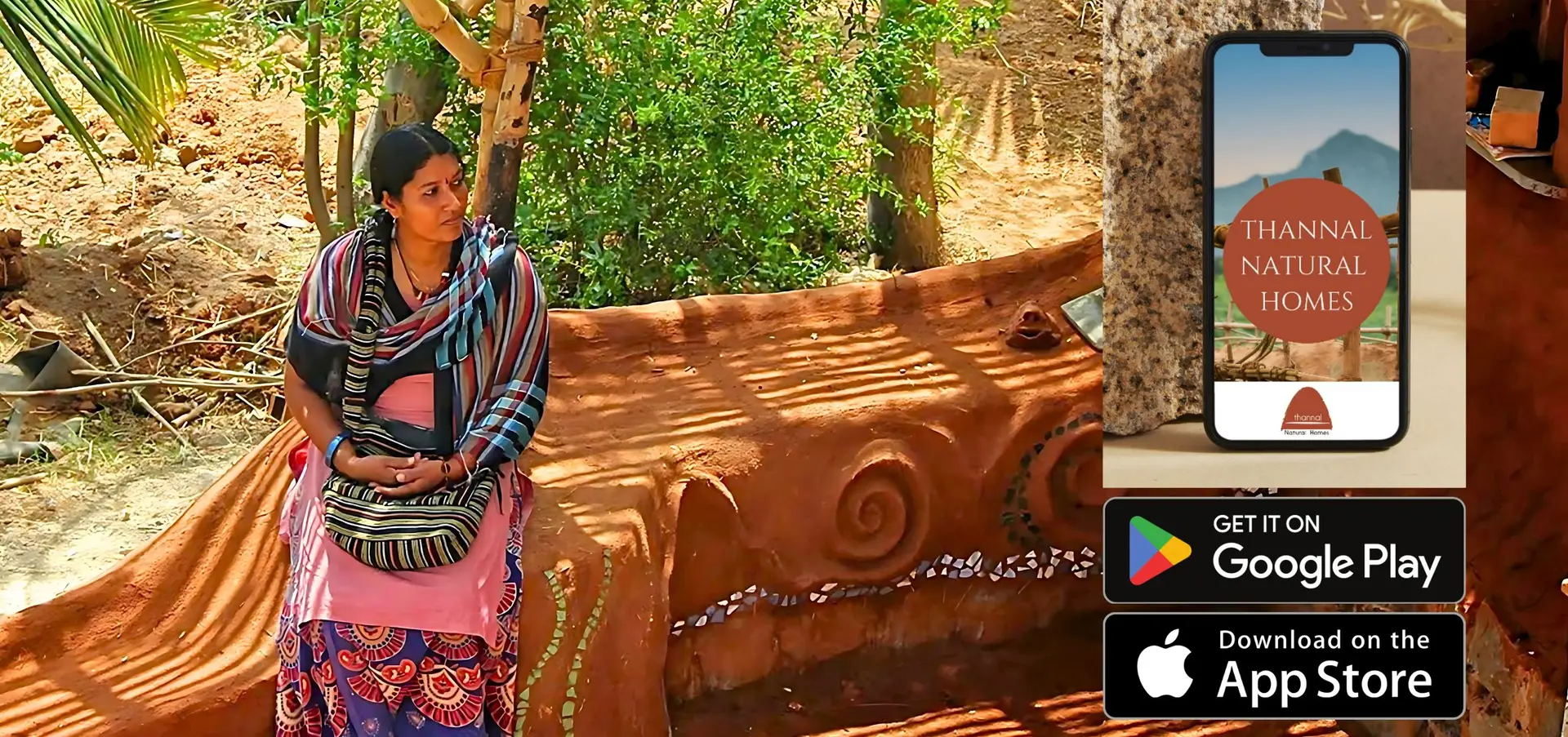
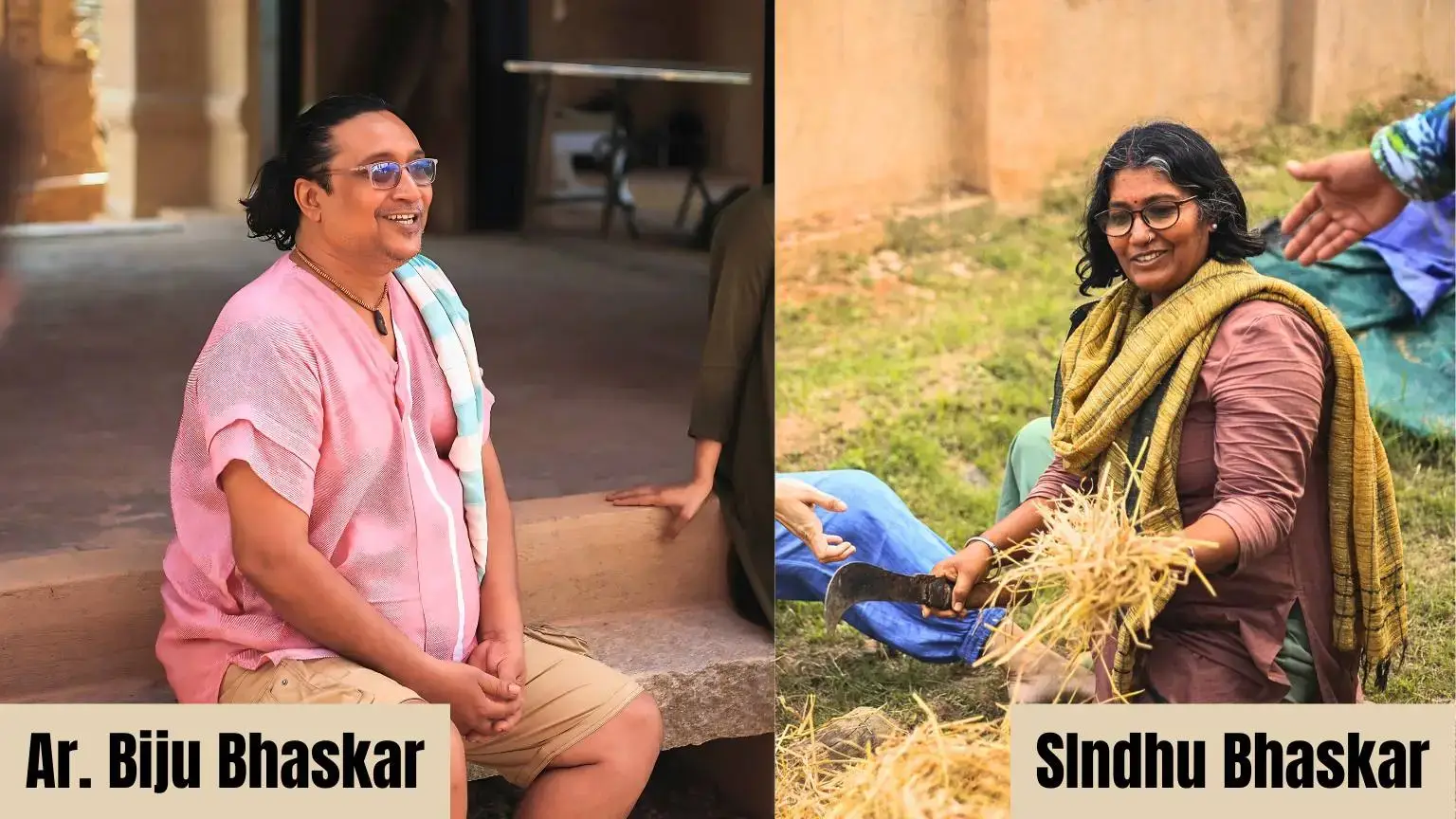
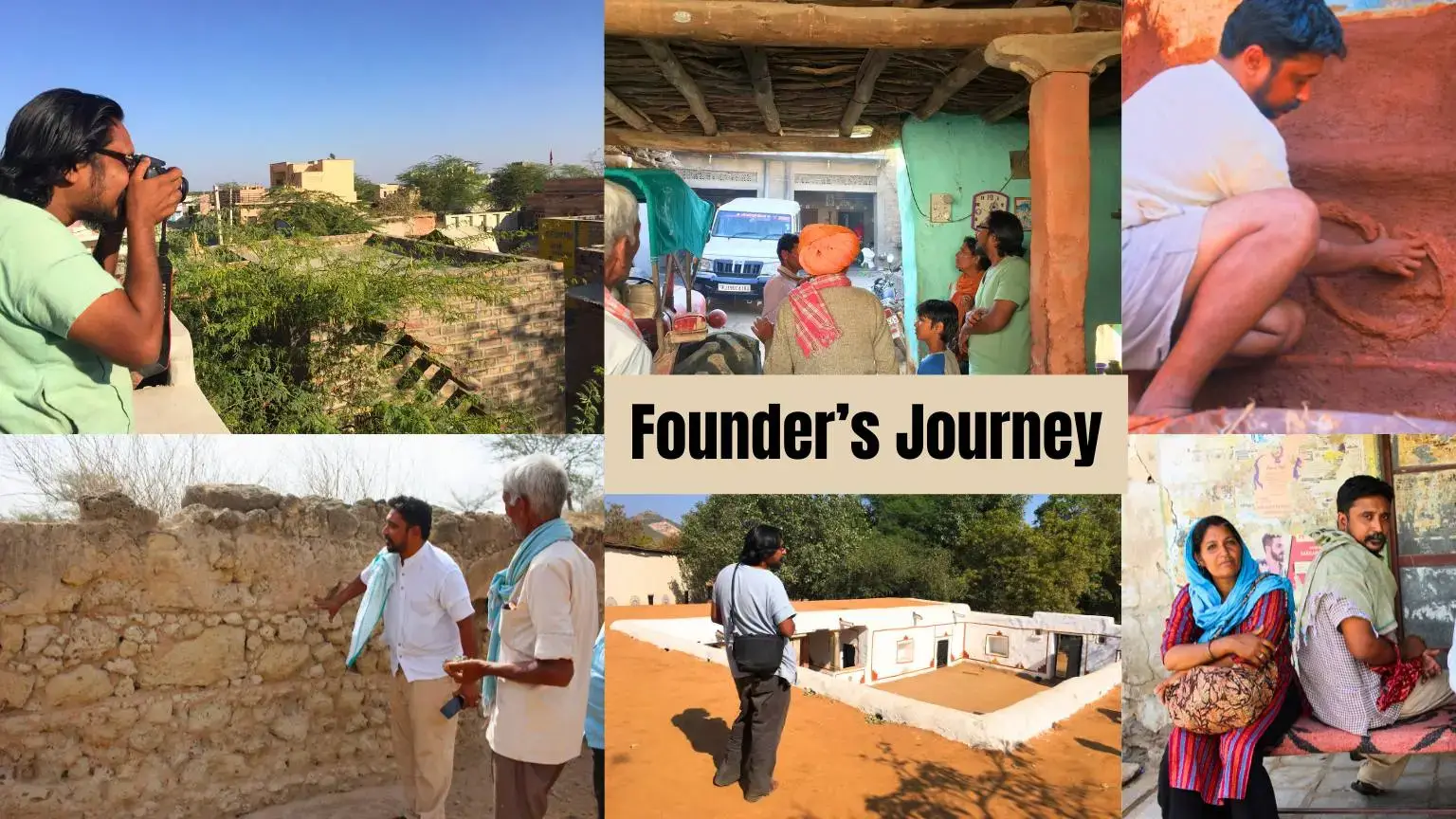
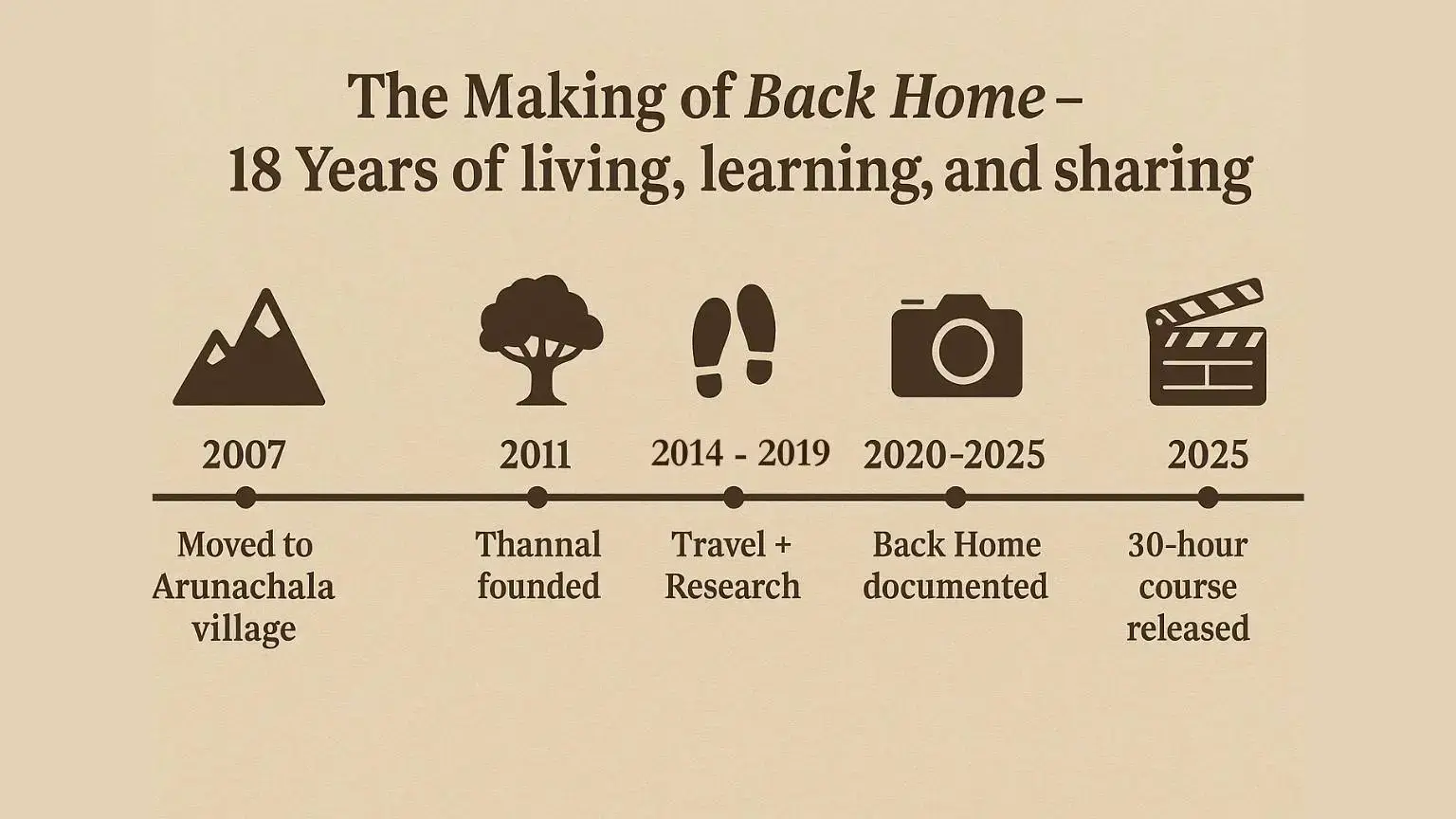
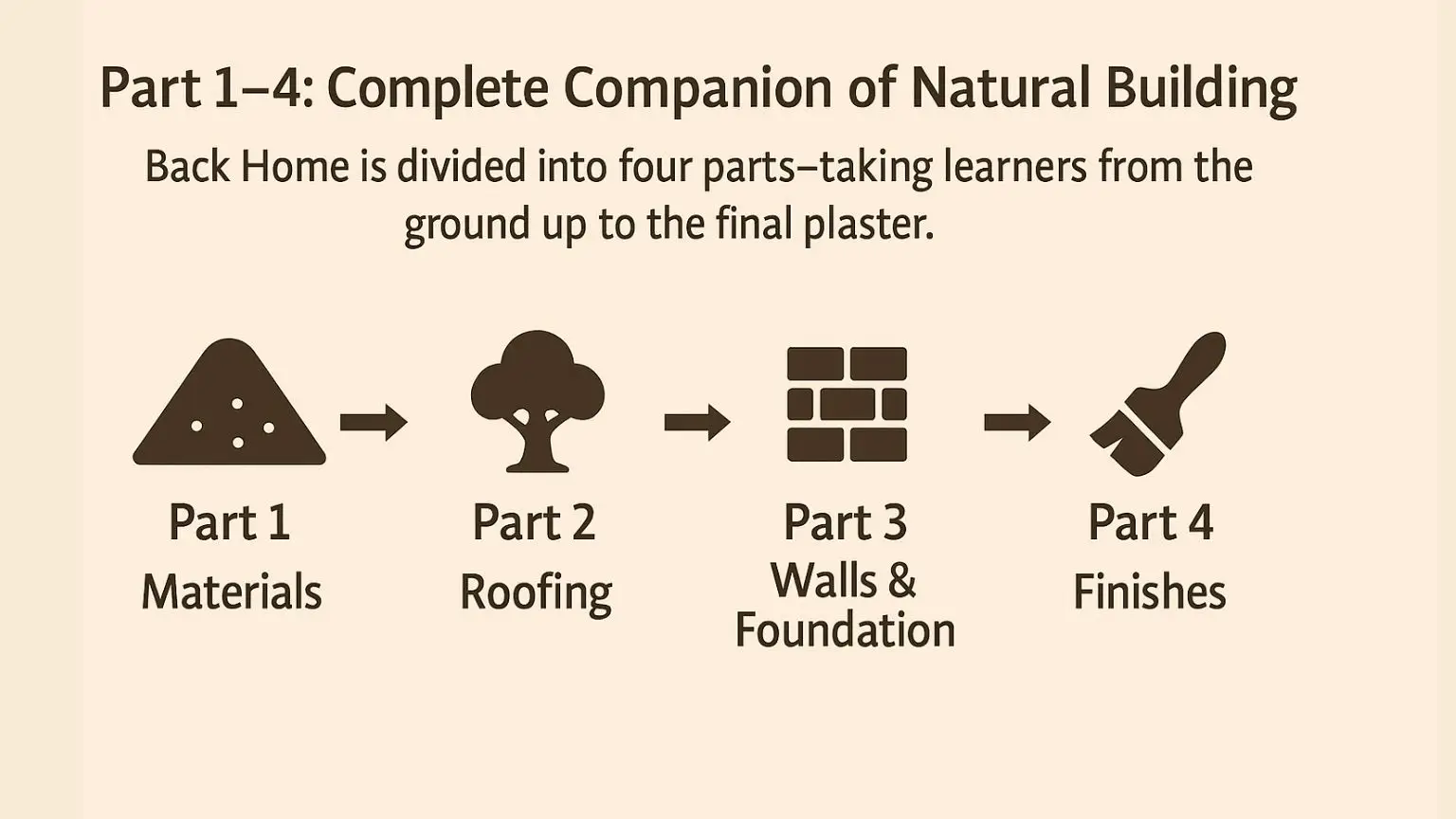
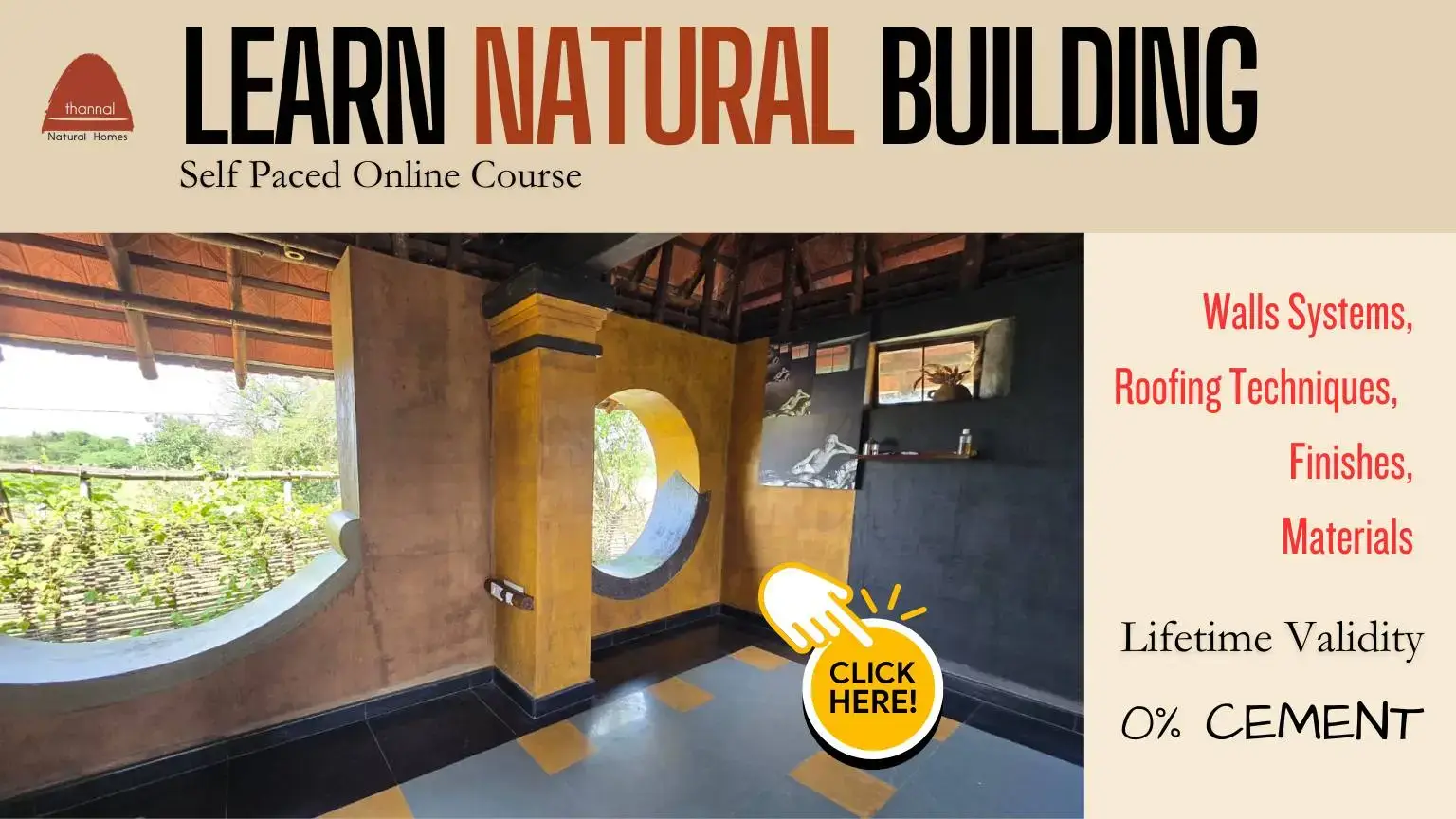
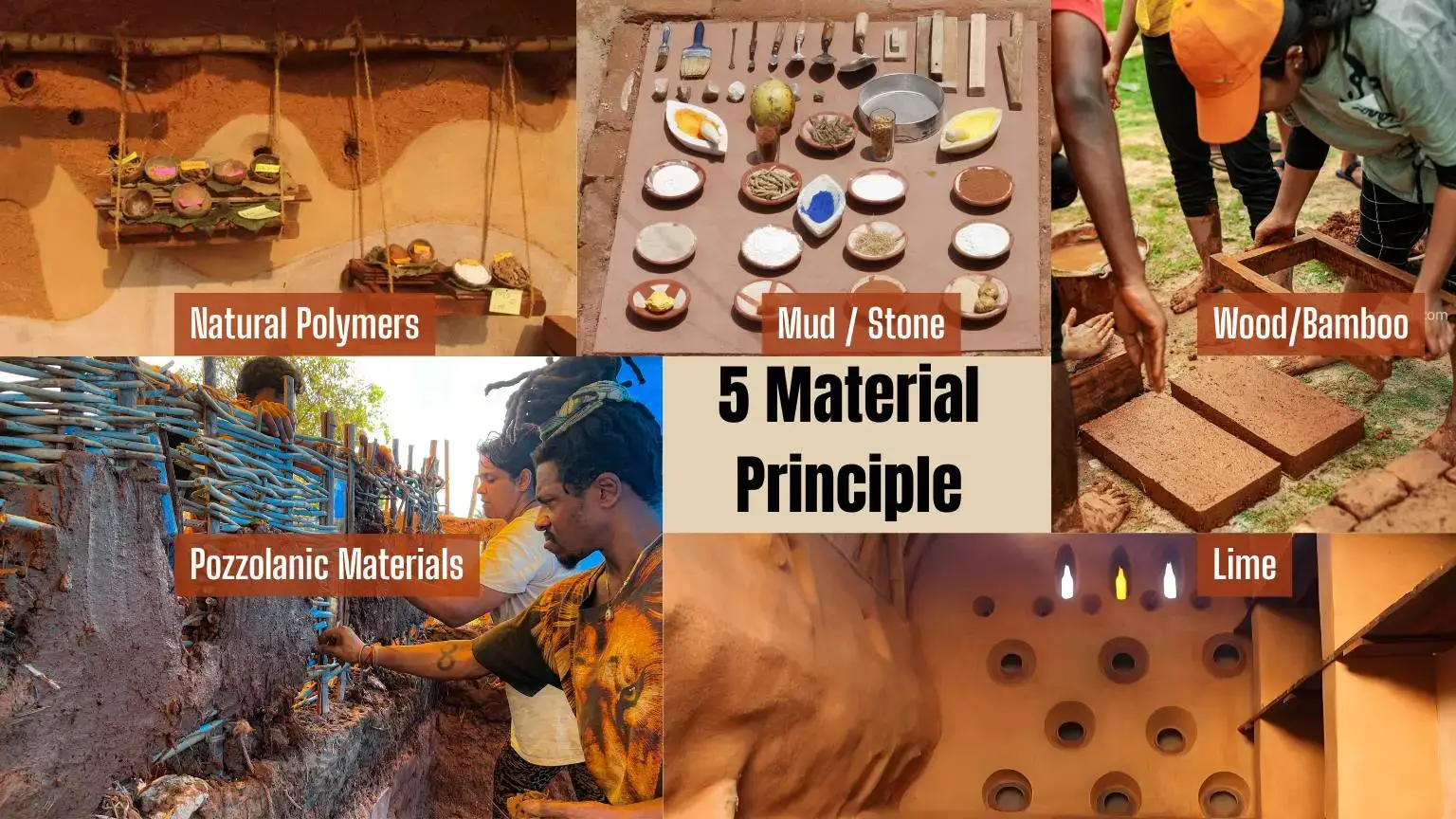
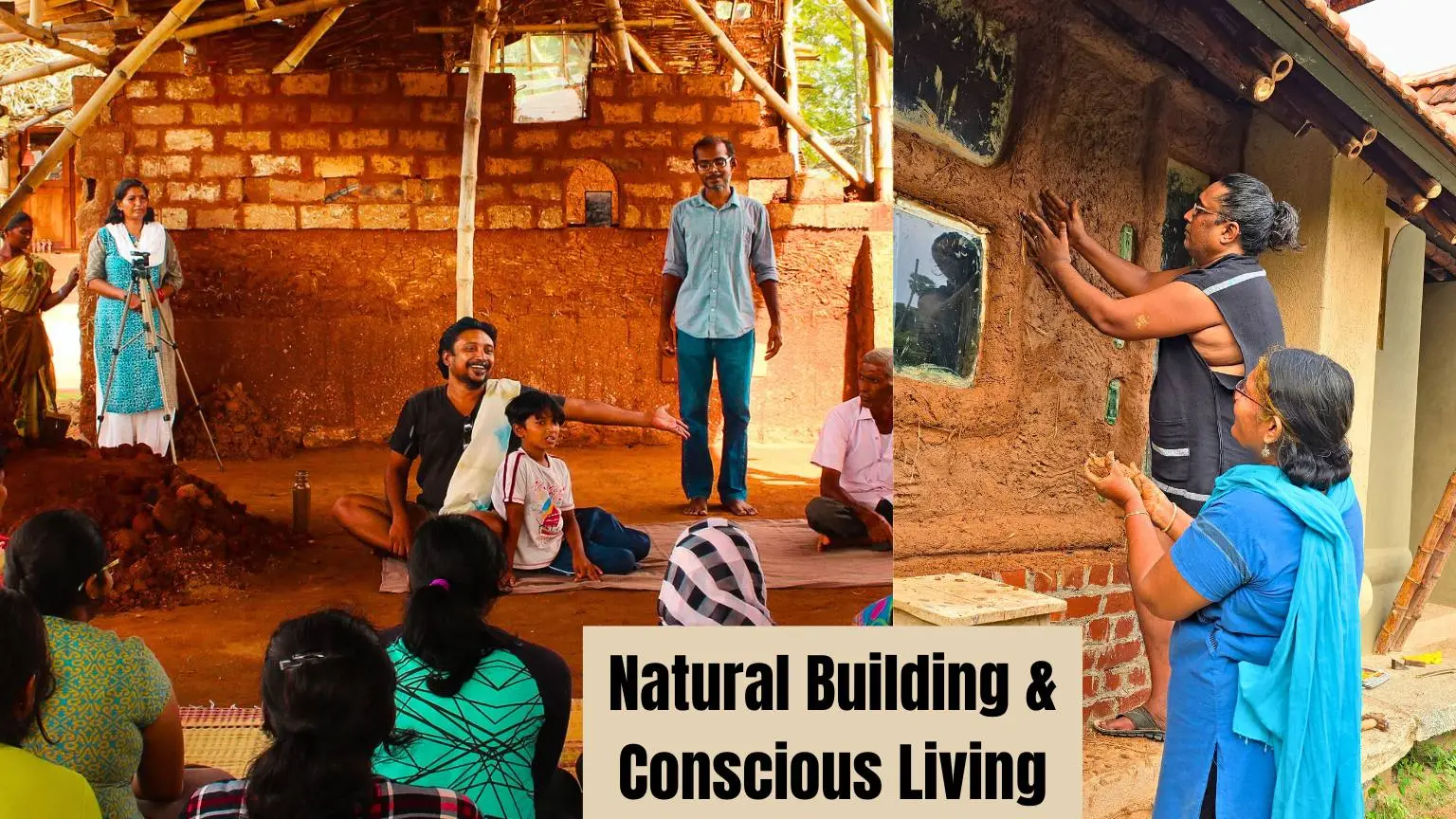
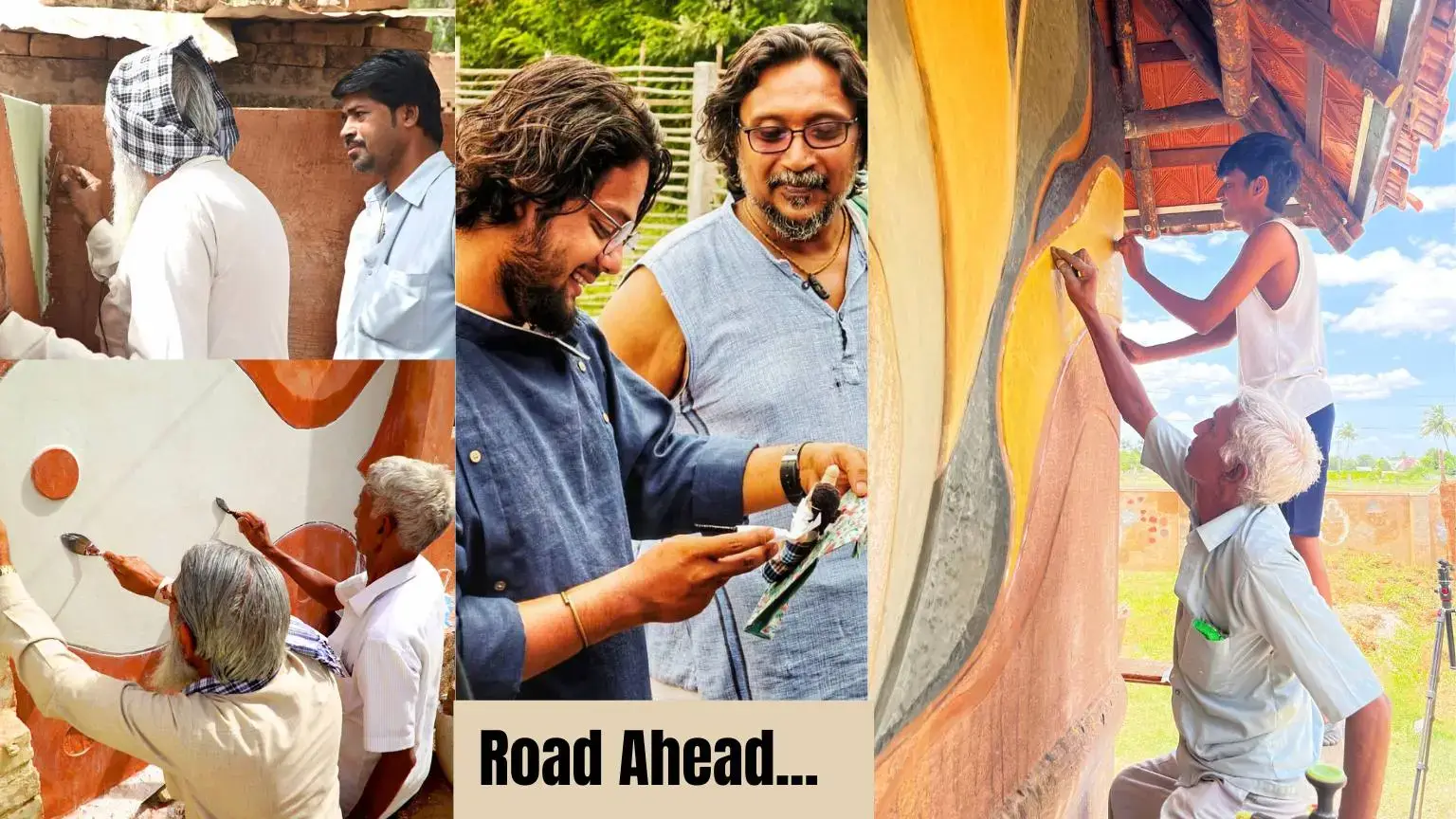

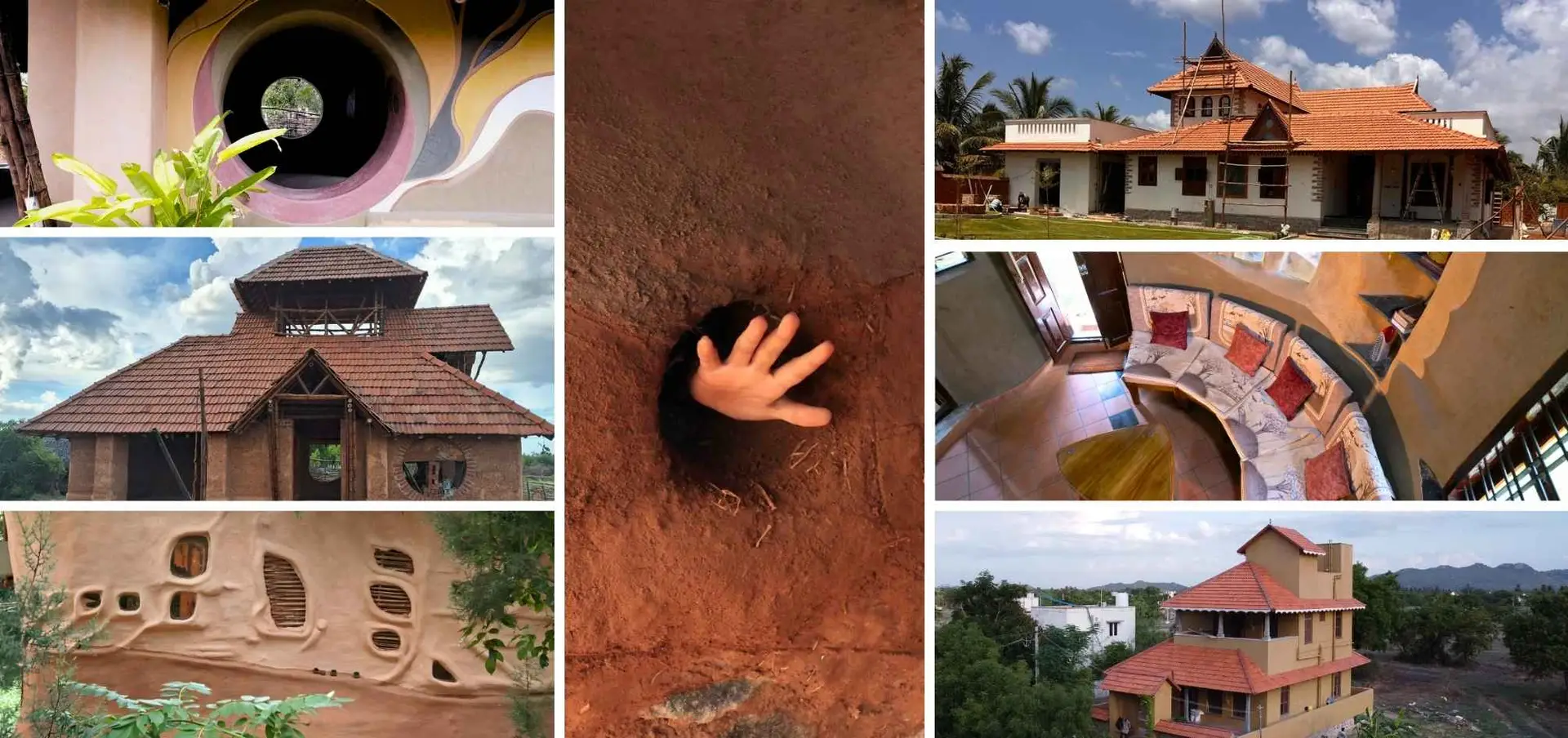

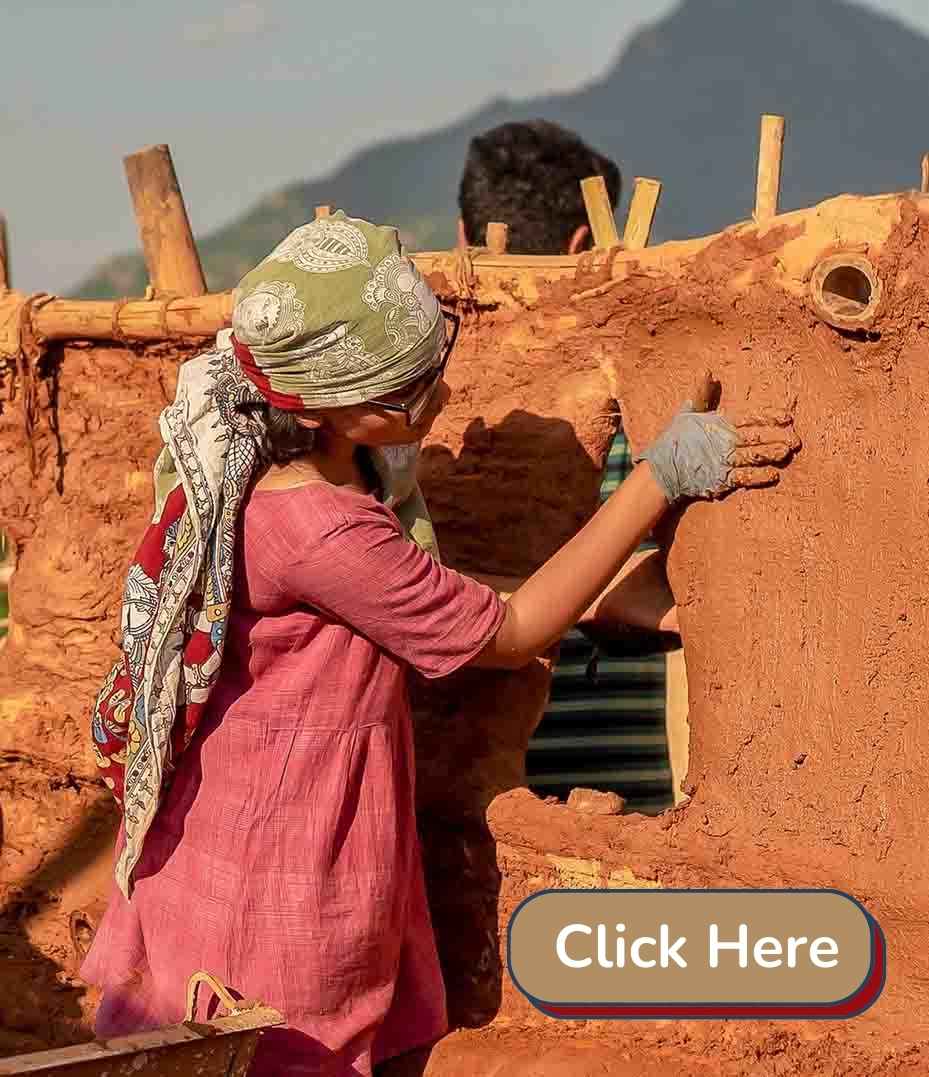
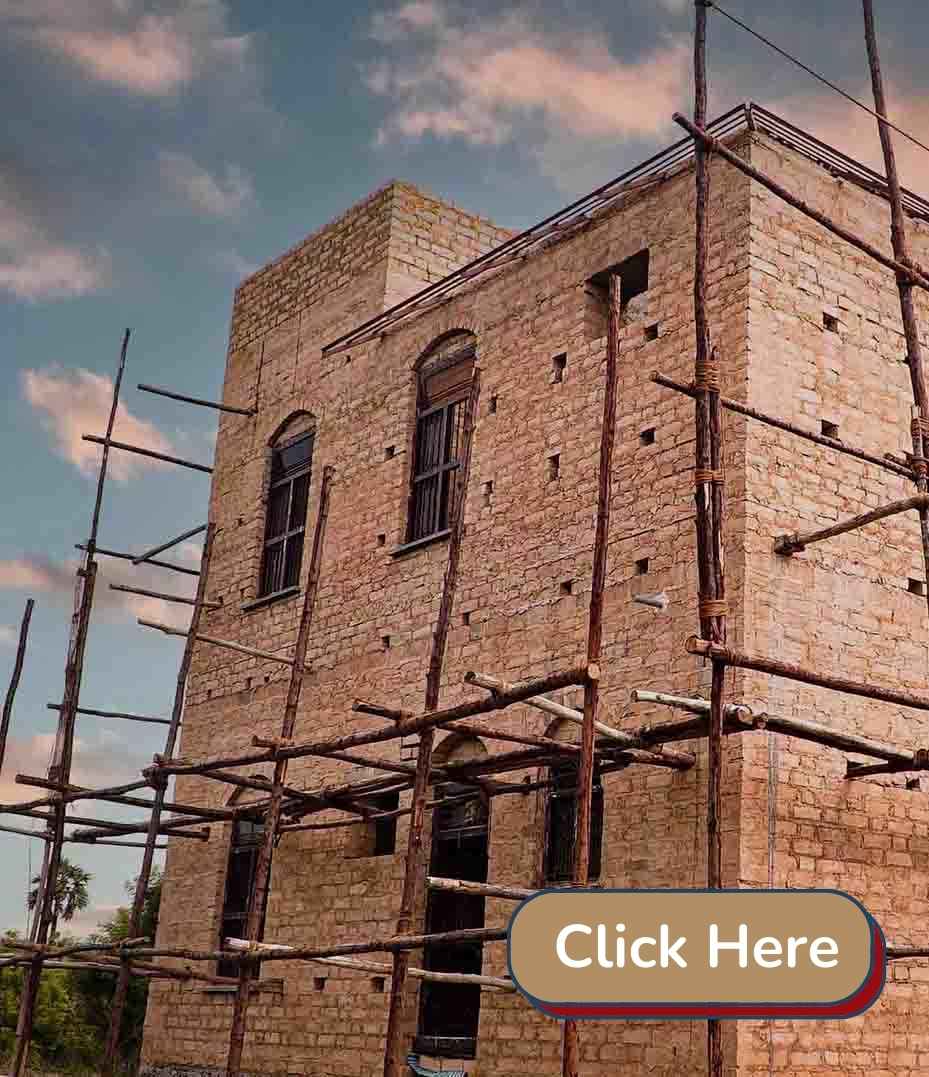
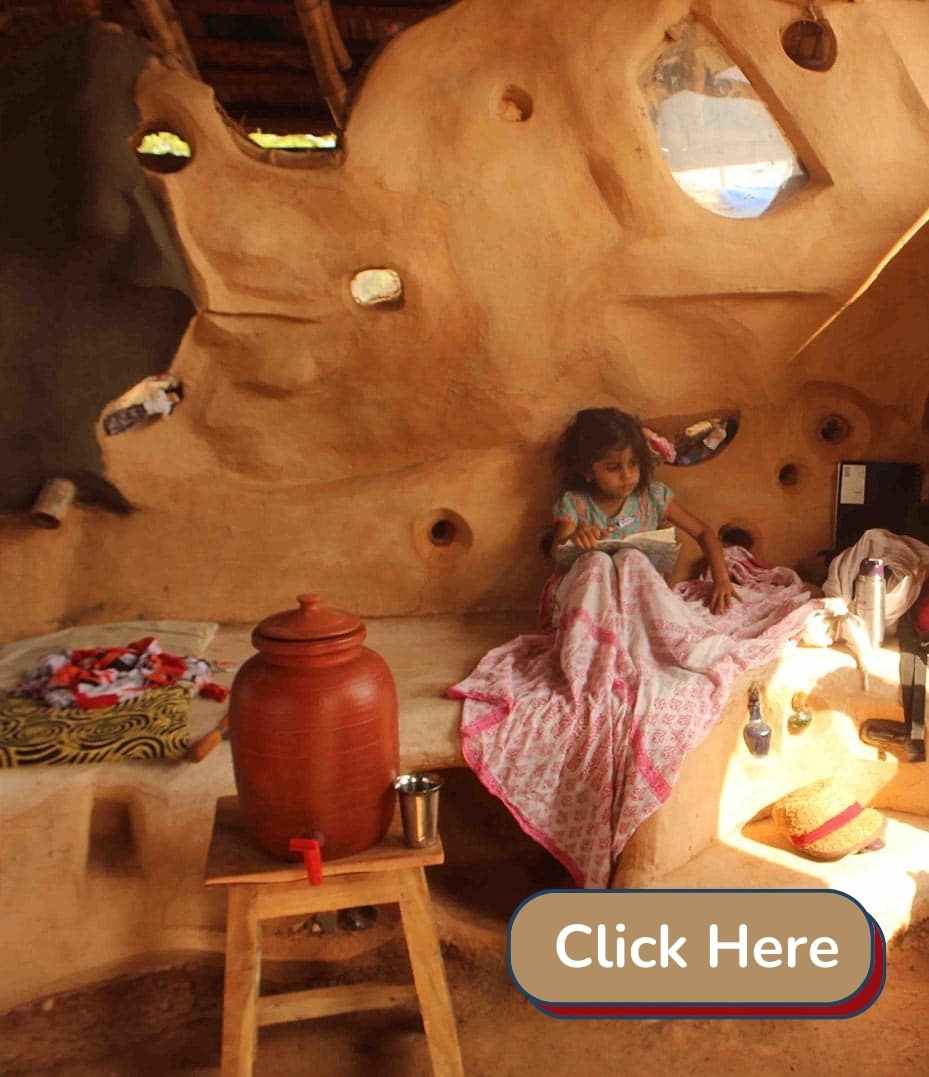


4 thoughts on “Learn Natural Building Online with Thannal’s “Back Home””
Namaste Yogesh,
Great to hear about your plan for 3 eco cottages near Satara—and your intent to champion this in rural areas. Yes, mud, bamboo, and cow-dung systems can be permanent in high rainfall zones when designed and detailed correctly. The fastest way to gain confidence (and answer skeptics) is our 10-Day Combo Hands-on Workshop in Tiruvannamalai, where we teach the full stack of earth + lime systems with practicals and design logic.
What you’ll learn that matters for heavy rain
Foundations & plinth: raised, well-drained plinths; capillary breaks; damp-proof detailing.
Wall systems: cob/adobe/CMB (compressed mud blocks) with lime-stabilised interfaces where needed; how to sample soil and design mixes without cement.
Weathering strategy: big roof overhangs, drip edges, stone/lime splash courses, and correct plaster build-ups (earth base + lime finish for rain-exposed faces).
Bamboo as structure: selection, seasoning, borax–boric treatment, joints/lashed connectors, termite and moisture protection, base shoes, and separation from ground splash.
Cow-dung in plasters/floors: traditional mixes for antifungal and breathable finishes; where to use them for longevity.
Maintenance that’s minimal & planned: realistic schedules so cottages last and look good year after year.
How to talk to villagers/clients: do–don’t list, cost levers, and showing durability through mock-ups and details.
Why this helps your project
You’ll leave with tested details for high-rainfall contexts and a checklist to brief local masons.
You can start a pilot cottage confidently (right roof, right plinth, right plaster), then scale to the other two.
Strong base to promote the tech in your village with credibility.
Next step
If you’d like to proceed, we’ll send you the registration process and the current fee/inclusions for the 10-Day Combo Hands-on Workshop:
https://thannal.com/extensive-10-day-combo-natural-building-workshop/
Hi am landscape designer n have keen interest in eco homes n cottages, in my village near satara I want tomake 3 cottages of this type specially in bamboo, mud n cowdung, but want to make it as a permanent solution, need your valuable guidance so that I can promote this technology again in rural areas.
Villagers are laughing at me,saying this technology won’t last long in high rainfall area.
Please contact
9819736612
Namaste Amit,
Thank you for your comment. A small meditation room made of mud is a beautiful and soulful vision. A space like that is most powerful when it is built with personal intention.
While we don’t keep a directory of contractors in specific cities, we believe a small, sacred project like this is the perfect opportunity for an owner-builder. Building your own meditation space can be a profound part of the meditative practice itself.
To gain the confidence and skill for this, we offer two powerful learning paths:
You can start your journey from home with our Self-Paced Online Courses. They are designed to give you all the foundational knowledge you need to create this space, perhaps with the help of a local mason whom you can guide.
For a truly immersive experience, you could join one of our 10-day Combo Workshops to get deep, hands-on training.
We invite you to explore both options to see which path feels right for you. Whichever you choose, please know that guidance from our team is available to support you on your journey.
Do you know anyone in Ahmedabad who can help us contructing a small meditation room in the yard , that shoukd be mas=de of natural material like mud